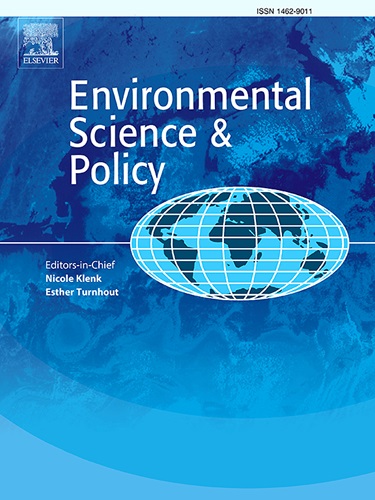如果你能抓住我:隐藏在视线中的微塑料
IF 5.2
2区 环境科学与生态学
Q1 ENVIRONMENTAL SCIENCES
引用次数: 0
摘要
微塑料(MP)污染被广泛认为是一个紧迫的环境问题,但某些主要来源仍未得到充分解决。本文着重于三个重要但经常被忽视的贡献者:油漆颗粒,纺织纤维和轮胎磨损颗粒(TWP)。这些来源加起来占全球温室气体排放量的25% %以上,每年近300万吨,但它们很少在研究或监管中被单独列出。由于其复杂的成分、漫射排放和与日常生活的紧密联系,每种都提出了独特的分析和监管挑战。我们列举了目前关于它们的环境途径、排放估计和检测方法的知识,强调需要多方法分析方法来克服采样和识别限制。监测仍然受到技术障碍的限制,特别是油漆颗粒中的颜料干扰、纤维污染和TWP的异质性。尽管它们具有重大影响,但政策反应仍然有限。目前的《全球塑料条约》草案承认这些来源属于一般MP类别,但缺乏具体措施。有效的缓解措施需要加强监管框架、重新设计产品、扩大生产者延伸责任(EPR)以及加大创新投资。此外,系统层面的干预、社会和行为改变,如改善公共交通,可以帮助从源头上减少TWP。为了解决这些“隐藏在显眼处”的污染物,本文呼吁采取协调一致的国家和全球行动,减少它们的排放,并将它们纳入更广泛的MP政策议程。只有通过这些有针对性的努力,我们才能确保这些被忽视的污染物不再逃避有意义的监管和环境问责。本文章由计算机程序翻译,如有差异,请以英文原文为准。
Catch me if you can: Microplastics hidden in plain sight
Microplastic (MP) pollution is widely recognised as a pressing environmental issue, yet certain major sources remain under-addressed. This paper focuses on three significant but often overlooked contributors: paint particles, textile fibres, and tire wear particles (TWP). Together, these sources account for over 25 % of global MP emissions, nearly 3 million tonnes annually, yet they are rarely singled out in research or regulation. Each presents unique analytical and regulatory challenges due to their complex compositions, diffuse emissions, and strong ties to daily life. We enumerate current knowledge on their environmental pathways, emission estimates, and detection methods, highlighting the need for multi-method analytical approaches to overcome sampling and identification limitations. Monitoring remains constrained by technical barriers, particularly for pigment interference in paint particles, fibre contamination, and the heterogeneous nature of TWP. Despite their significant impact, policy responses remain limited. The current draft of the Global Plastics Treaty acknowledges these sources under the general MP category but lacks specific measures. Effective mitigation will require enhanced regulatory frameworks, product redesign, expanded Extended Producer Responsibility (EPR), and greater investment in innovation. Moreover, system-level interventions, societal and behavioral changes, such as improved public transport can help reduce TWP at source. In addressing these "hidden in plain sight" pollutants, this paper calls for coordinated national and global action to reduce their release and integrate them into broader MP policy agendas. Only through such targeted efforts can we ensure these overlooked pollutants no longer escape meaningful regulation and environmental accountability.
求助全文
通过发布文献求助,成功后即可免费获取论文全文。
去求助
来源期刊

Environmental Science & Policy
环境科学-环境科学
CiteScore
10.90
自引率
8.30%
发文量
332
审稿时长
68 days
期刊介绍:
Environmental Science & Policy promotes communication among government, business and industry, academia, and non-governmental organisations who are instrumental in the solution of environmental problems. It also seeks to advance interdisciplinary research of policy relevance on environmental issues such as climate change, biodiversity, environmental pollution and wastes, renewable and non-renewable natural resources, sustainability, and the interactions among these issues. The journal emphasises the linkages between these environmental issues and social and economic issues such as production, transport, consumption, growth, demographic changes, well-being, and health. However, the subject coverage will not be restricted to these issues and the introduction of new dimensions will be encouraged.
 求助内容:
求助内容: 应助结果提醒方式:
应助结果提醒方式:


